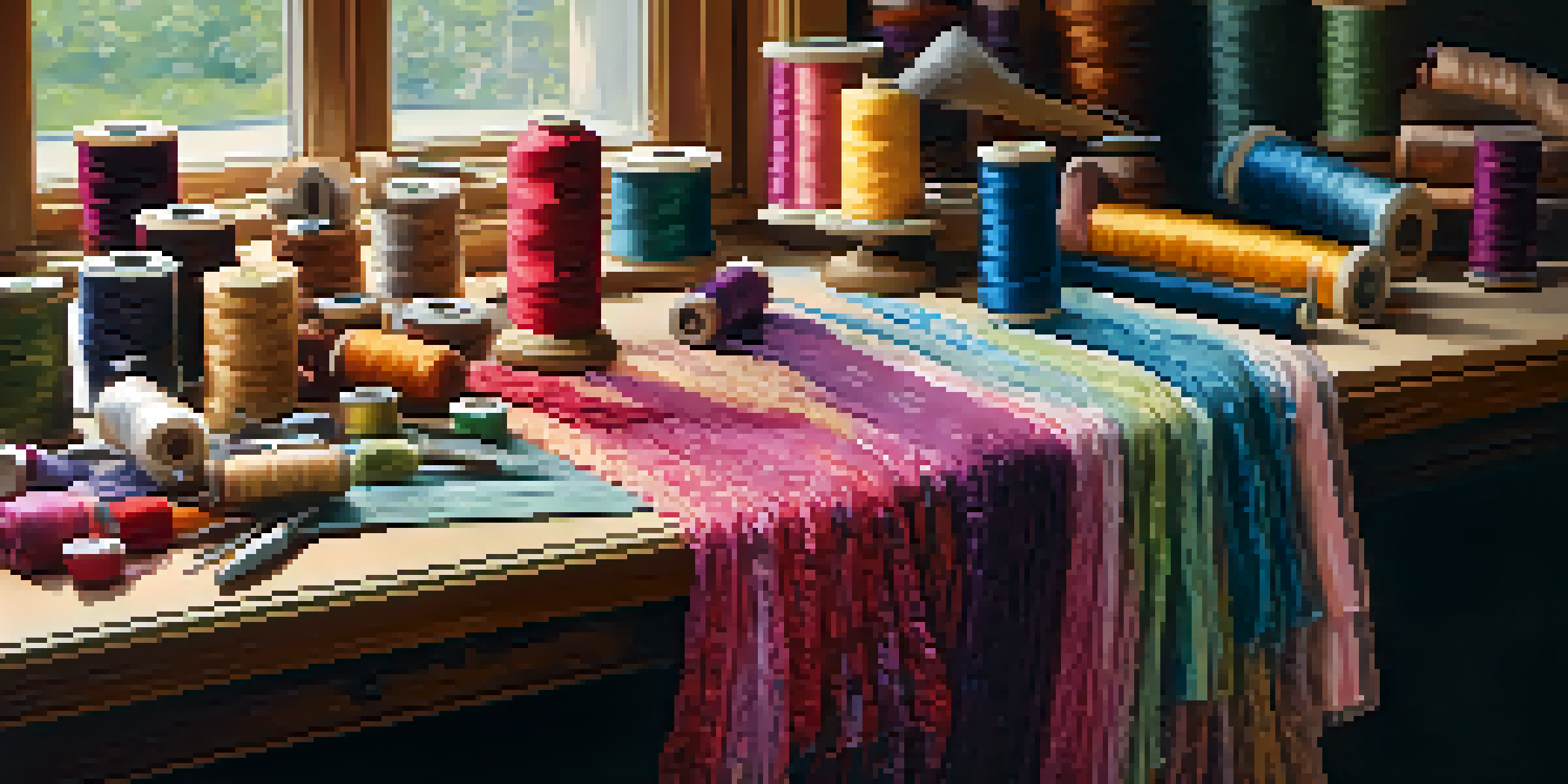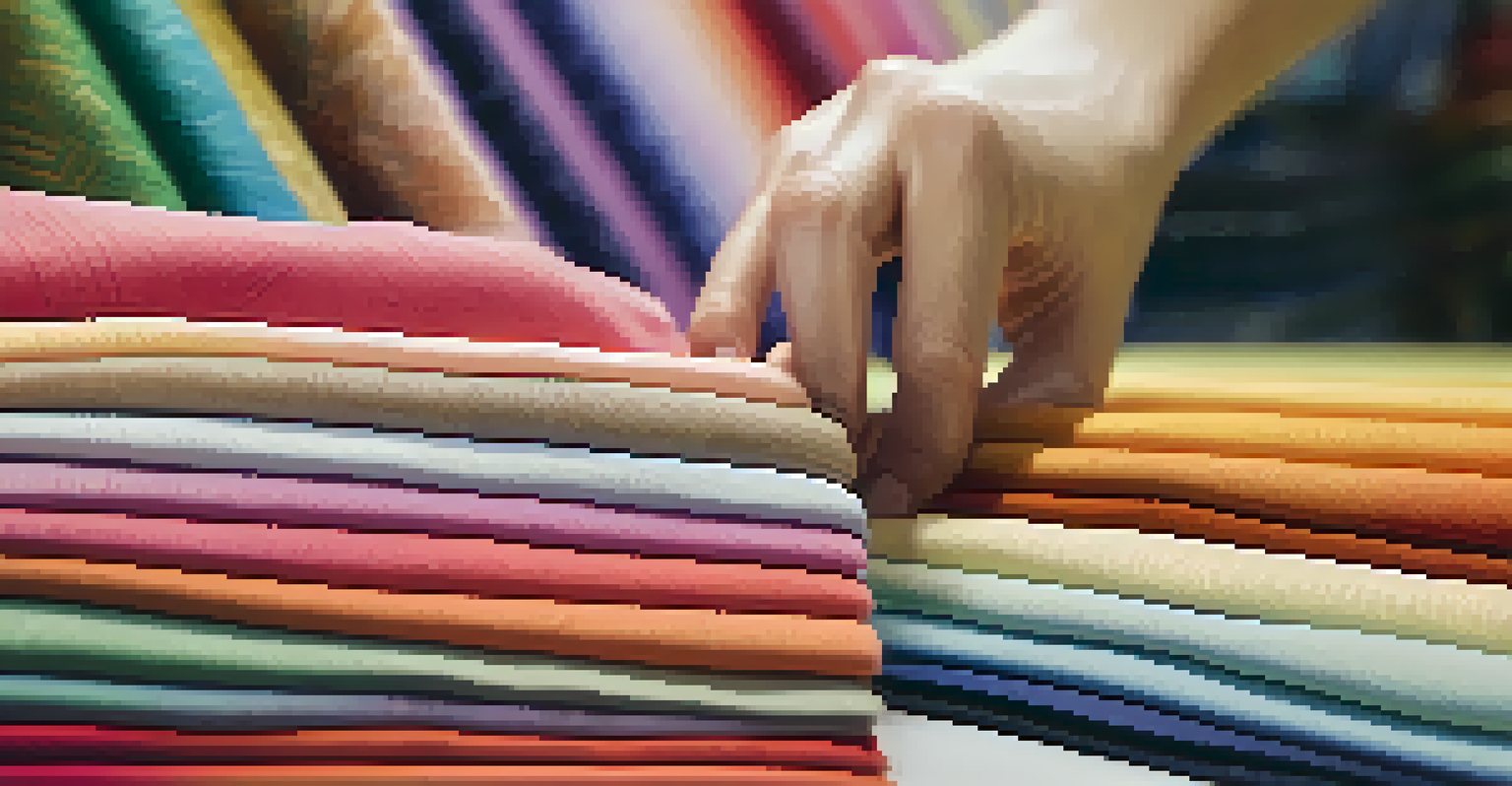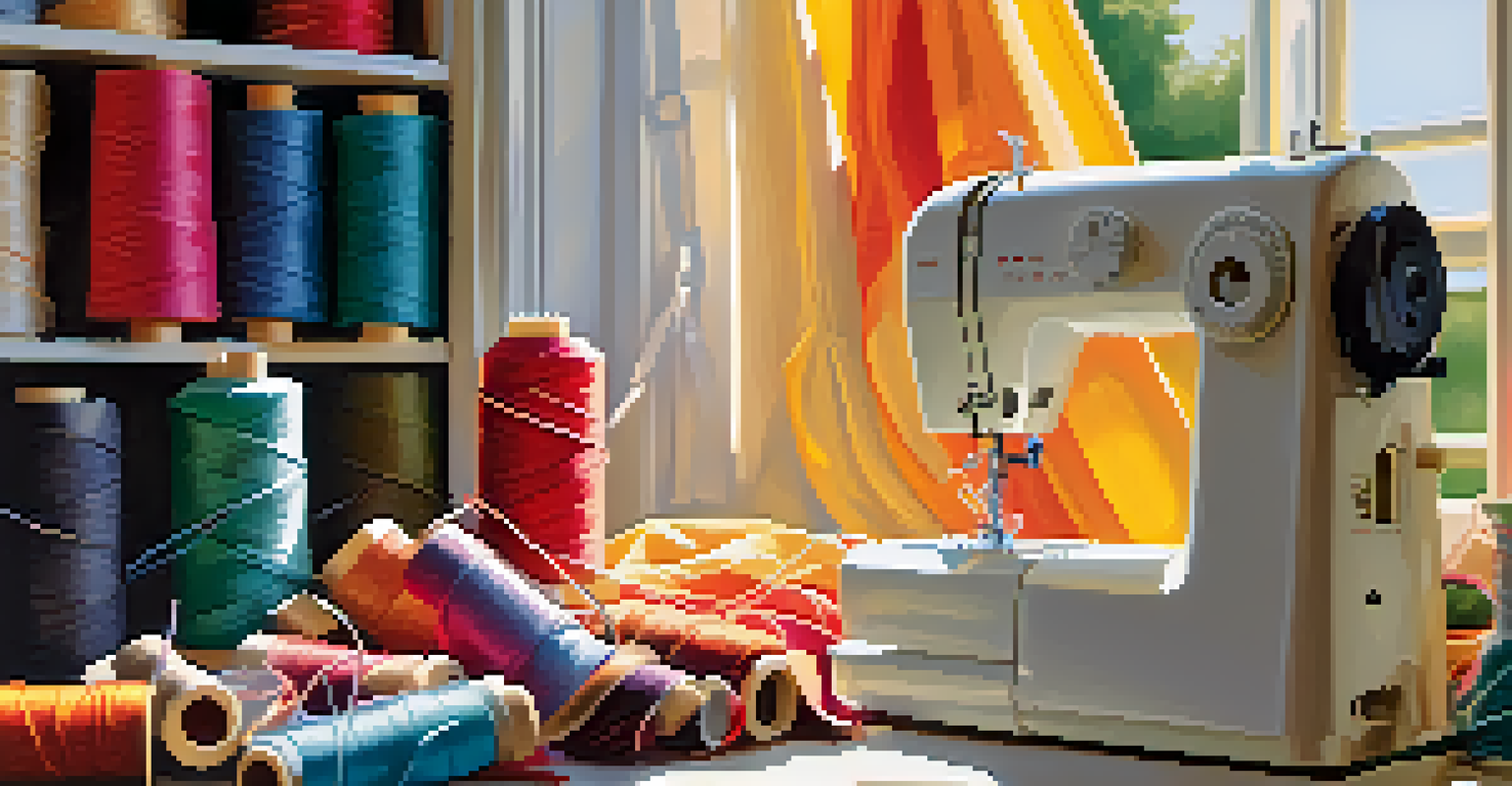Choosing the Right Fabrics for Your Sewing Projects

Understanding Fabric Types: The Foundation of Your Project
When it comes to sewing, the type of fabric you choose can make or break your project. From soft cottons to luxurious silks, each fabric has its unique characteristics and uses. Understanding these fabric types is essential to ensure your sewing project turns out just as you envisioned.
The only way to do great work is to love what you do.
For instance, cotton is breathable and easy to work with, making it perfect for beginners or casual garments. On the other hand, fabrics like chiffon or satin can be more challenging due to their slippery nature, but they can elevate your design to a new level of elegance. Knowing the strengths and weaknesses of each fabric type will empower you to make informed choices.
Ultimately, the right fabric is not just about aesthetics; it also affects the functionality and comfort of your finished piece. So take your time to explore different fabric types and think about how they will complement your design.
Consider the Purpose of Your Sewing Project
Before you dive into selecting fabric, consider what you’re making and who it’s for. The purpose of your project greatly influences your fabric choice. For example, if you’re creating a summer dress, lightweight and breathable fabrics like cotton or linen are ideal.

In contrast, if you're sewing a winter coat, heavier materials such as wool or fleece will not only provide warmth but also structure. Think about the wear and tear the finished item will endure and choose a fabric that can withstand it.
Choose Fabric for Your Project's Purpose
The fabric you select should align with the intended use of your project to ensure it meets both aesthetic and practical needs.
By aligning your fabric choice with the intended use, you can ensure your project meets both aesthetic and practical needs. This foresight will save you time and frustration down the line, allowing you to enjoy the creative process.
Fabric Weight: What You Need to Know
Fabric weight is a crucial factor that can impact how your project drapes and feels. Fabrics are generally categorized into lightweight, medium weight, and heavyweight. Lightweight fabrics, such as chiffon or georgette, flow beautifully, making them great for dresses and blouses.
Creativity is intelligence having fun.
Medium-weight fabrics, like quilting cotton, are versatile and work well for a variety of projects, including shirts and skirts. Heavyweight fabrics, such as denim and canvas, provide structure and are perfect for outerwear or bags.
Understanding fabric weight helps you plan not only the style of the garment but also the sewing techniques you'll use. A well-chosen fabric weight can make your project easier and more enjoyable to sew, so pay attention to the specifications!
The Importance of Fabric Texture and Feel
The texture and feel of fabric play a significant role in how comfortable and appealing your finished project will be. Fabrics can range from soft and cozy to rough and rigid, influencing not only wearability but also the visual impact of your design. For example, a soft flannel is perfect for a cozy blanket, while a crisp poplin may be better for a tailored shirt.
When selecting fabric, take the time to touch and experience the material. Does it feel pleasant against the skin? Is it too stiff for your intended design? These questions can help you determine if a fabric is right for your project.
Understand Fabric Weight and Texture
Fabric weight and texture significantly impact both the drape and comfort of your finished piece, so choose wisely.
Don’t forget about texture contrast; mixing fabrics with different textures can add depth and interest to your work. A smooth silk paired with a textured cotton can create stunning visual contrast that elevates your sewing project.
Choosing Colors and Patterns: Making a Statement
Selecting the right colors and patterns is crucial to bringing your vision to life. Whether you prefer bold prints or subtle hues, your choices will define the overall aesthetic of your project. Consider the occasion and the audience for your creation; a vibrant floral fabric may be perfect for a summer dress, while a muted plaid can be suitable for a casual shirt.
Additionally, think about how different colors and patterns can complement each other. Mixing and matching fabrics can lead to exciting designs, but ensure they harmonize well together. Sometimes, a simple pattern can enhance a more intricate design without overwhelming it.
Color psychology can also play a role in your fabric selection. For instance, blue often evokes calmness, while red can bring energy. Think about the message you want your fabric to convey, and let that guide your choices.
Budgeting for Fabric: Quality vs. Cost
Budgeting for fabric can be a balancing act between quality and cost. While it might be tempting to opt for the cheapest option, investing in higher-quality fabrics can significantly enhance the longevity and appearance of your project. Quality fabrics often have better drape and feel, making your finished item look more professional.
However, that doesn’t mean you can’t find great deals! Keep an eye out for sales or clearance items, and don’t hesitate to explore fabric remnants for smaller projects. Shopping at local fabric stores can also provide insights into where to find the best quality at affordable prices.
Experiment for Unique Creations
Don't hesitate to mix different fabrics and experiment creatively to enhance the uniqueness and appeal of your sewing projects.
Ultimately, understanding the value of the fabric you choose is essential. A well-budgeted project can lead to wonderful results that you'll cherish for years to come, proving that spending a little more upfront can save you money in the long run.
Sourcing Fabrics: Where to Shop
Finding the right fabrics can be an adventure in itself! Local fabric stores often provide a tactile experience, allowing you to feel the materials before buying. They can also be great places to ask for advice from knowledgeable staff who can guide you in your selection process.
Online shopping has also become increasingly popular, offering a vast array of fabrics at your fingertips. Websites dedicated to sewing often feature user reviews and detailed descriptions, making it easier to choose the right materials from the comfort of your home.

Don’t forget about thrift stores and second-hand shops; you might stumble upon unique fabrics that add character to your projects. Sourcing fabrics can be both a fun and rewarding part of the sewing experience, so enjoy the hunt!
Experimenting with Fabrics: Embrace Creativity
Finally, don’t be afraid to experiment! Trying out different fabrics can lead to unexpected and delightful results in your sewing projects. Mix textures, colors, and patterns to truly make your creations unique. For example, pairing a structured fabric with a soft one can yield interesting silhouettes and styles.
If you’re unsure about a fabric’s behavior, consider making a muslin or test piece first. This practice garment can help you understand how the fabric drapes and stitches, giving you the confidence to tackle your final project.
Embracing creativity in fabric selection not only enhances your skills but also keeps the sewing experience fresh and enjoyable. Remember, every project is a chance to learn and grow, so let your imagination run wild!